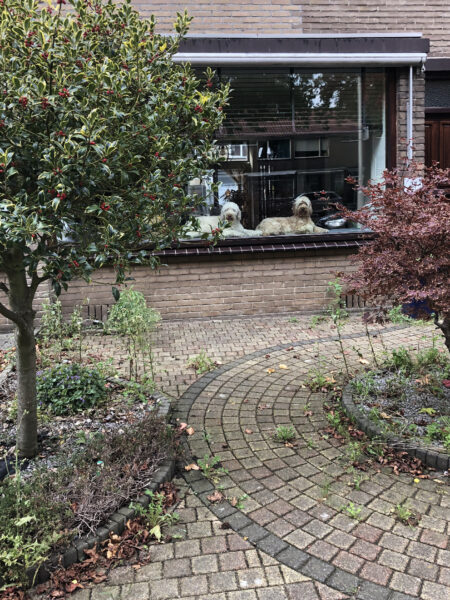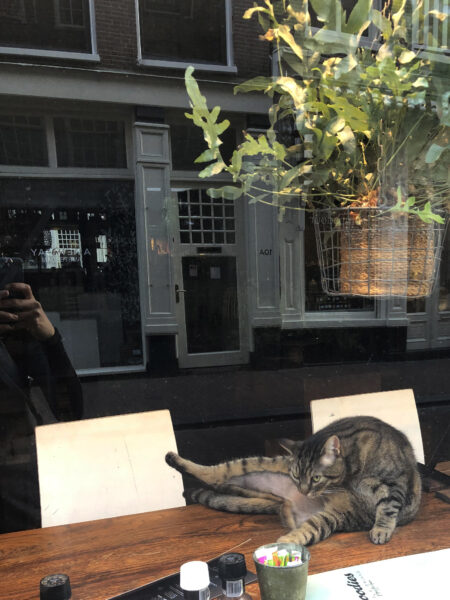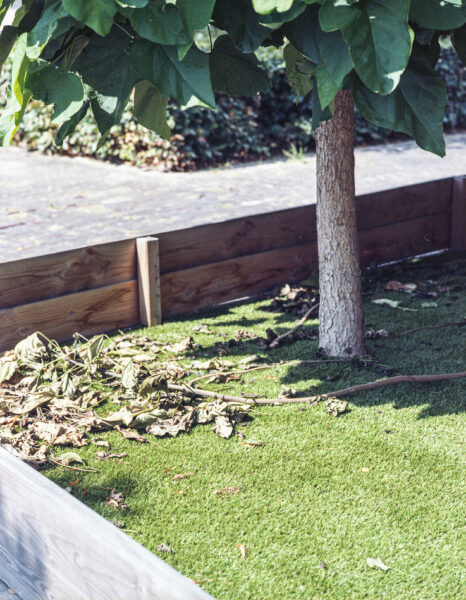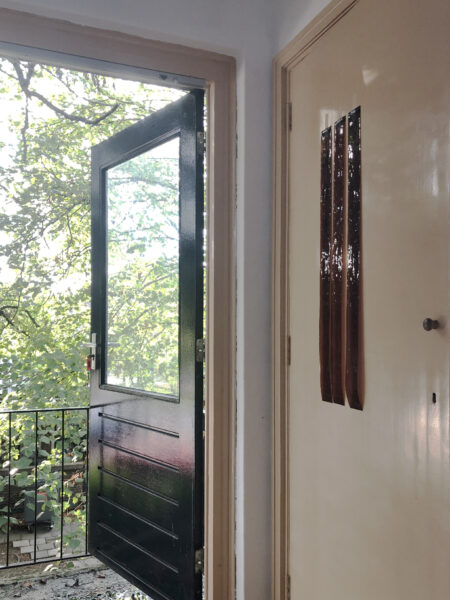 Agenda
Artikelen
Programma
Agenda
Artikelen
Programma

The artist-photographer Tina Umer started her two-month residency at Witte Rook in the fall of 2020. Tina Umer is lead by her intuition and uses her camera as a tool for searching, both literally in the act of photographing as well as in the resulting works. At Witte Rook she dives into the immediate surrounding to reconsider her position, and refresh her mind and eyes. Witte Rook got to ask her a series of questions through which she was able to explore her work and so that she could share her ideas on our platform.

JR: What do you need to create your work, and how would you describe your artistic practice?
TU: My work and practice are usually centered around the photographic medium, sometimes as a starting point, sometimes immersed in it. Another element in my work is time, which, contrary to the familiar idea of photography as something fast, is to me a lengthier practice of processing, reassuring and contemplating themes that can illuminate the work from different perspectives.
JR: Can you give an example of a work in which this can be experienced?
TU: I usually need a trigger that comes from some sort of change, internal or external (though both are usually intertwined, consciously or unconsciously). This is what bumps me off the track I am on, and allows me to re-consider and review an established view or idea.
I also see potential in humour and playfulness as a way to engage the viewer and tempt them to dig deeper, especially for the purpose of making an artwork accessible to different people, as humour can be a tool to facilitate heavier topics.

JR: Upon arriving in Breda, what first caught your eye?
TU: When I arrived in the first weekend of September, I was surprised as I got a second chance at summer, which I didn’t expect. People were outside in large numbers, and the mood was quite cheerful and electric. In the sleepy neighbourhoods just across the train tracks, however, I was met with a strong sense of being excluded from people’s lives. Shutters, curtains, or both completely shut the sun out. Neat and orderly, or messy and abandoned front-yards made me even more curious what goes on behind the barriers. The vastly different approaches to these private spaces intended for the public eye were mesmerizing, often completely paved, taming them as much as possible, often with no apparent purpose. Just simple grass takes time and effort, after all.
In Sweden I’m used to seeing more apartment buildings, where the public/private space follows strict house rules set by the owner, such places are harder to glean information from.

JR: How do you connect with the environment you find yourself in at Witte Rook, and how does that influence your working process?
TU: In contrast to the neighbourhood with (more or less) curated lawns, Witte Rook seems like a wild oasis; a haven for birds, spiders, and much more. Magnificent trees overgrowing the house may be seen as a threat to a tamed city. A wonderful cacophony of diverse bird sounds is competing for the stage with traffic noises of all sorts and volumes, in concert with various building-site noises from across the street; drilling, banging, shouting, singing, mixed with the occasional song on the radio. The natural growth and the expanding city really clash in the sound experience, which plays an often unconscious role in our overall perception of the place.
JR: What would your definition of photography be?
TU: In my opinion, photography has been too anthropocentric for a very long time, rooted in humanist ideas and practices, it may be held responsible for certain human behaviours that are harmful toward the environment. Some contemporary thinkers, such as Johanna Zylinska in her book Nonhuman Photography, extend the idea of photography beyond the sole purpose of suiting or serving the human eye.
One can also think of a field that became rather popular in the last years: cameraless photography. The significance of the subject of the image is at least partially lifted, giving way to a different way of thinking about photography and its physical and temporary implications. There is also distancing (at least partially) from the technological competition between big developers and sellers of photographic tech.
I also think photography and its impact should be more widely represent in education, as it allows for extreme manipulations in the post-truth area, even with fairly simple means.

JR: In the artist statement you provided in your application, you wrote that “Working intuitively with a camera while exploring a place on foot or by bike is how I’ve done many place-based works before, and how I want to continue searching in new environments,’’
What kind of gestures, like research, contemplation, viewing work of others and/or experiments, do you use to feed and sharpen your intuition? Can you give an example of a time you felt your intuition leading you in your work?
TU: To me, the act of photographing in such situations is like highlighting a sentence in a book you’re reading. It’s a reminder of an instance which you want to review, rethink, and possibly use in the future. Maybe it clarifies and materializes something you already knew, didn’t yet. It gives shape to something you’ve been feeling, or it’s so cryptic it is a knot you want to untie. With a camera, I try to not let myself be guided by just one idea, but rather deconstruct the idea over time as a form of self-discovery.
As we always see and experience what we’ve seen and experienced before, I don’t think there is much room for detachment from oneself. You always bring your own brain into the game, with your histories, behaviours, and patterns. I think I always use my intuition to an extent, as I can’t always analyze everything I see with purely methodological reasoning. Just like how we trust our fingers to remember our pin-codes, I trust my body to work in harmony with my past and my experiences through photographic tools.